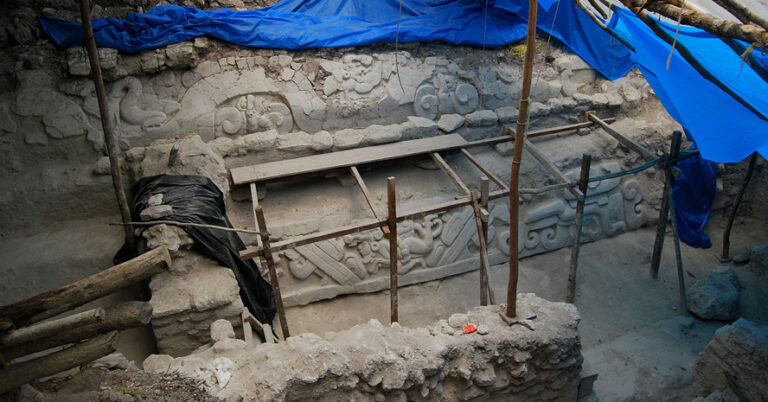In Úbeda—a town where history is as much a part of the landscape as the rolling Andalusian hills—it’s easy to take old stone walls and winding cobblestone streets for granted. But even in a place that wears its past so openly, surprises still surface. That’s exactly what happened in 2016 when Juan Francisco set out to renovate his home. What he thought would be a straightforward upgrade turned into something far more remarkable: hidden behind a nondescript interior wall was a stunning piece of the city’s forgotten past.
Back in 2016, Juan was doing what countless homeowners have done: renovating. His plans were straightforward—strip back some old plaster, open up a few rooms, maybe expose some charming brickwork. But when one particular wall came down, the renovation turned into something else entirely. Behind it, sealed away for centuries, was a stunning stone bas-relief—ornate, weathered, and clearly not just decorative.
What Juan had uncovered was the long-lost facade of St. George’s Hospital, a 14th-century building that once stood proudly in Úbeda. And as historians would later confirm, this wasn’t just any relic—it was a Renaissance-era architectural treasure, likely touched by the hand of none other than Andrés de Vandelvira, one of Spain’s most celebrated architects.

The Discovery: From Plaster Dust to UNESCO Recognition
Imagine finding a chunk of Spain’s artistic legacy in your living room. That’s essentially what happened. The intricately carved facade Juan revealed wasn’t just a wall—it was a piece of cultural infrastructure, frozen in time. It took experts no time at all to recognize its value.
St. George’s Hospital had served Úbeda for centuries, built during a period when the town was a vibrant hub of Andalusian life. While parts of the hospital were documented in historical records, much of it had been lost—or so people thought. Over time, new buildings went up, old ones came down, and the city grew over its own history. The section Juan discovered had been hidden behind layers of later construction, surviving only because no one had touched it in generations.
Now restored and protected, the facade has become part of the UNESCO World Heritage listing for Úbeda and neighboring Baeza, both known for their Renaissance architecture.

A Closer Look at St. George’s Hospital
St. George’s wasn’t just a hospital in the medical sense. Like many institutions in medieval Spain, it also played a charitable and civic role, caring for the poor and reflecting the ideals of its era through art and architecture. What Juan revealed was not merely a chunk of stone, but a glimpse into how communities in 14th-century Spain expressed social responsibility—through beautifully crafted public buildings meant to uplift and endure.
Its rediscovery sheds light on how architecture and social history were intertwined. The ornate relief work is packed with symbolism and detail, speaking to the transition from Gothic styles to the more measured, harmonious lines of the Renaissance.

The Quiet Signature of Andrés de Vandelvira
When word of the discovery got out, architectural historians were quick to connect the dots. The design bore all the hallmarks of Andrés de Vandelvira, a leading light of Spain’s Renaissance whose work still shapes the visual identity of Úbeda and nearby Baeza. Known for his sharp eye for balance and form, Vandelvira was a master at blending classical elements into something unmistakably his own.
To be fair, there’s still some debate over whether every detail of the facade can be directly linked to him. But the style—elegant carvings, symmetrical layout, classical flourishes—lines up closely with his known work. If nothing else, the resemblance is striking. That possible connection adds a whole new layer of meaning to the find. It’s not just an old wall—it’s a glimpse into a time when architecture wasn’t just about function, but about beauty, identity, and civic pride.
A Window into the Past, Hidden in Plain Sight
It almost sounds like a movie plot: someone knocks through a wall and finds a piece of forgotten history. But the truth of Juan Francisco’s story is even more compelling. What he uncovered wasn’t treasure in the usual sense—it was something far rarer: a physical thread connecting the present to the 14th century, hidden in the very bones of his home.
Finds like this remind us how much of the past is still out there, quietly waiting. Cities like Úbeda are full of stories we haven’t heard yet—some buried, some built over, and some just waiting for the right set of hands (or a renovation project) to bring them back into view.
Sometimes history doesn’t arrive with fanfare—it shows up covered in dust, behind an old wall, asking to be seen again.




